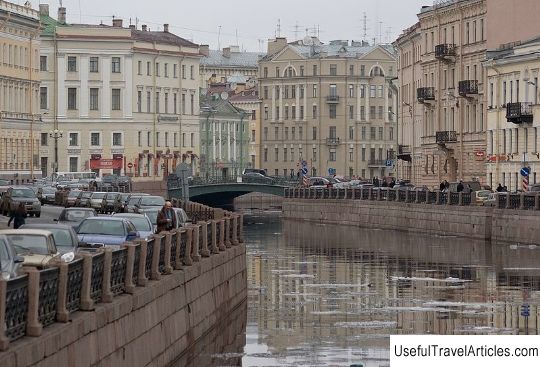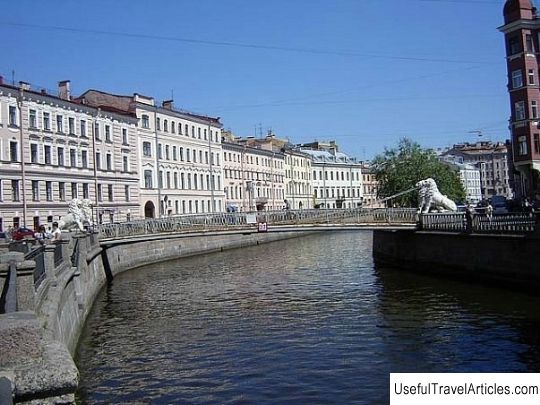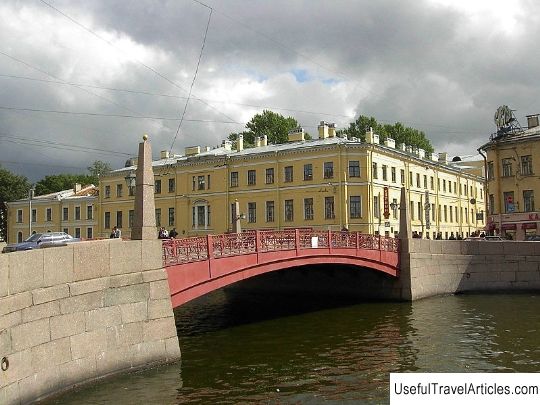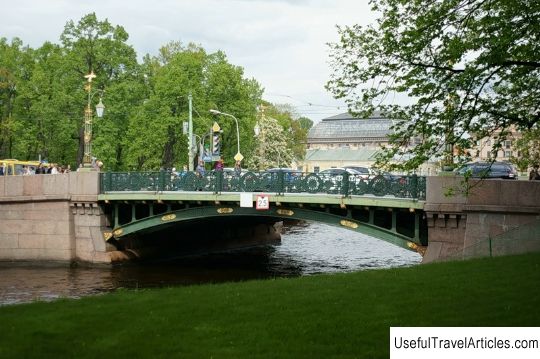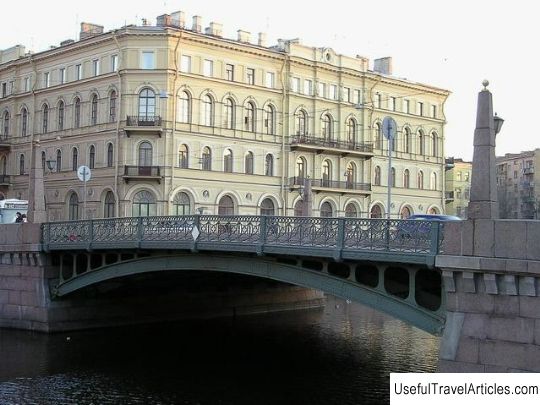Blue Bridge description and photo - Russia - Saint Petersburg: Saint Petersburg
Rating: 7,5/10 (100 votes) 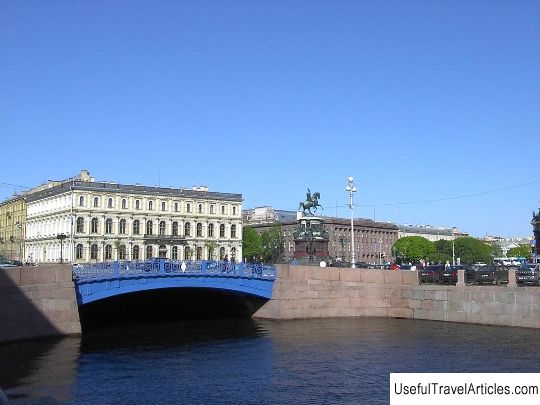
Blue Bridge description and photos - Russia - Saint Petersburg: Saint Petersburg. Detailed information about the attraction. Description, photos and a map showing the nearest significant objects. Photo and descriptionThe Blue Bridge in St. Petersburg is a cultural heritage of the Russian Federation. It is located in the Admiralteisky district of the city, 800 meters from the Sadovaya metro station and connects the 2nd Admiralteisky and Kazansky islands. The total length of the bridge is 35 m, width is 97.3 m. The Blue Bridge is part of the architectural ensemble of St. Isaac's Square, connecting it with Voznesensky Prospekt and Antonenko Lane (formerly Novy). Interestingly, because of its width, the bridge is perceived as part of the square. At the beginning of the 18th century, the place where St. Isaac's Square is now located belonged to the Admiralty, serving as a glacis (an earthen embankment in front of the outer moat of the fortress). The banks of the Moika were rapidly "overgrown" with residential buildings. By the 30s of the 18th century, when the Admiralty was no longer perceived as a fortress, the construction of residential buildings began on the former glacis as well. From 1736 to 1737, the bottom of the river was deepened in this area, the banks were closed and reinforced with wooden shields. At the same time, in 1737, master van Boles built a wooden drawbridge, which was painted blue. The townspeople immediately began to call him Blue. When in 1738 Morskaya Sloboda suffered from severe fires, they were going to arrange a large market on the site of St. Isaac's Square, and a pier near the Blue Bridge. This idea was abandoned, although in 1755 they were going to build a pier again near the bridge. In the 18th century, the Blue Bridge was reconstructed. It was reinforced with stone pillars and became 3-span. By the end of the century, the Blue Bridge site had become something of a labor exchange that lasted until 1861. Thousands of people came here: some in search of work, others in search of workers. Moreover, workers could not only be hired, but also bought. That is why they began to call the square “the slave market”. In 1805, the Blue Bridge was rebuilt practically from scratch according to the standard design of the engineer V. Geste. After adaptation to the terrain, construction began. It was completed by 1818. All cast-iron elements and structures were made by masters of the Olonets state-owned iron foundry. The width of the bridge was 41 m. Due to the construction of the Mariinsky Palace, the Blue Bridge was significantly expanded. The project was carried out by engineers I.S. Zavadovsky, E.A. Adam, A.D. Gotman. The granite obelisks with lamps were replaced with cast-iron lanterns. In 1920, serious cracks were found in the eastern part of the bridge. There was a threat of its complete destruction. From 1929 to 1930, there was a reconstruction of the load-bearing parts of the building, during which some of the cast-iron pillars of the western part were replaced with a hinged vault made of reinforced concrete. The work was supervised by engineers O. Bugaeva and V. Chebotarev. The decor and lanterns of the lower part of the bridge were lost. In 1938, the road surface was overhauled on the Blue Bridge. The stone paving stones were replaced with asphalt concrete. At the beginning of the new millennium, the engineers of the Mostotrest State Unitary Enterprise carried out diagnostics of the bridge. It turned out that the destruction of the upper part was critical, many fastening bolts were missing, and there were deep cracks. The reason for this was the high dynamic load from the transport. In 2002, according to the project of T. Kuznetsova and O. Kuzevatov, the bridge was overhauled and restored. Despite the fact that the Blue Bridge was reconstructed many times in the 19th and 20th centuries, its appearance has come down to us practically unchanged. For example, the lanterns, which are copies of the lanterns of the Alexander III bridge in Paris, remained unchanged. A granite column with the Neptune trident appeared next to the Blue Bridge in 1971 (designed by architect V.A.Petrov). On the bridge itself there are water level marks during the period of major floods, the last of which was in 1967. Not far from the bridge is the Mariinsky Palace, St. Isaac's Cathedral, a monument to Nicholas I, the All-Russian Institute of Plant Industry named after Vavilov, House of the Composer.       We also recommend reading Marine park description and photos - Bulgaria: Burgas Topic: Blue Bridge description and photo - Russia - Saint Petersburg: Saint Petersburg. |
